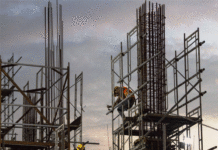- RERA implementation & lower GST revive consumer faith in new launches; 36% of buyers still prefer ready-to-move-in units
- Lower prices influenced >50% homebuyers to purchase homes in 2018; nearly 52% would buy again with the same developer
- End-user-driven Bangalore saw 44% of respondents buy homes for investment
- 70% of prospective buyers prefer properties under INR 80 lakh
- Tier 2 & 3 cities new investment hotspots; Bangalore favourite investment destination for NRIs
Mumbai, April 25, 2019: While ready-to-move-in homes remained the preferred choice for several homebuyers, new launches (which drew the least consumer interest in the previous survey) saw a decent revivalaccording to ANAROCK’s Consumer Sentiment Survey H1 2019. Over 18% of respondents now prefer new launch properties as against mere 5% in the previous survey.
Interestingly, 44% NRIs would now consider new launch properties over under-construction (to be completed in 1 year) or ready-to-move-in homes (obviously a welcome development for developers facing funding issues due to previously negligible advance sales).
RERA implementation and lower GST rates immensely helped revive consumer faith in new launch properties. More than attractive prices, effective RERA enforcement influenced over 50% buyers in Delhi-NCR to take the real estate plunge in 2018. In Kolkata, nearly 58% of buyers took the plunge due to lower home loan rates.
Anuj Puri, Chairman, ANAROCK Property Consultants says, “Our latest survey confirms that a conducive reform-driven market environment and Government sops have breathed life to Indian real estate. Long-term investors with realistic returns expectations are returning. 58% of our respondents bought property for end-use, and 42% bought for investment – up by 10% against the previous survey.”
“Tier 2 & 3 cities have emerged as the new investment hotspots thanks to low property prices and improved infrastructure boosting their overall growth potential,” says Puri. “Our survey confirms a 26% investor approval rating for tier 2 & 3 cities, with Bangalore following as the second-most preferred investment option with 21% votes.”
Main Takeaways:
53% of respondents buying property for investment are focused on rental income
The recent budget offered major benefits to property investors, such as increased TDS threshold on rental income from INR 1.8 lakh to INR 2.4 lakh and the benefit of rolling capital gains tax from investment in one house over to two new houses. Property investment with a focus on rental income is once again being seen as lucrative.
A majority of 41% of respondents preferred to buy property within the city limits, close to offices, schools, etc. However, 38% found the steep prices in city centres or even within city limits unattractive and are willing to
consider suburban areas.
This trend was most obvious in relation to expensive cities like NCR and MMR. Also, affordable housing project launches and improved infrastructure facilities in suburban areas are helping both homeownership and investor sentiment for the suburbs.
70% of respondents preferred properties priced within INR 80 lakh
Over the past five years, developers have been actively focusing on the affordable and mid-range housing segments. The share of new supply in the affordable and mid-segment combined (within INR 80 lakh) stood at77% between 2017-2018 – 39% in affordable housing and 37% in the mid-range segment.
Other Survey Highlights
- Not surprisingly, 56% of respondents in Delhi-NCR preferred ready-to-move properties (though 44% NRIs preferred new launch properties)
- 27% of respondents in MMR and 23% in Hyderabad preferred RTM homes
- Bangalore remains the perennial investment favourite
- Over 55% respondents preferred 2BHKs; 53% preferred compact-sized homes
- 41% consider properties priced between INR 30 – 45 lakh as affordable across the top 7 cities
- Nearly 38% of respondents favoured homes in the mid-segment (INR 40 lakh – 80 lakh); 32% preferred affordable homes within INR 40 lakh
- In Bangalore, Delhi-NCR, Pune and Hyderabad, buyer preference is shifting from the affordable to the mid-segment housing category


















